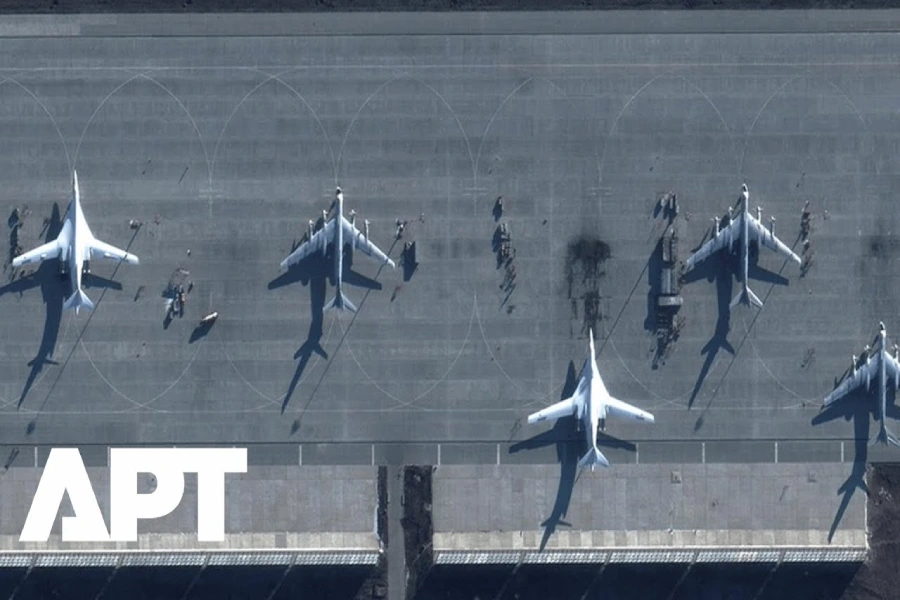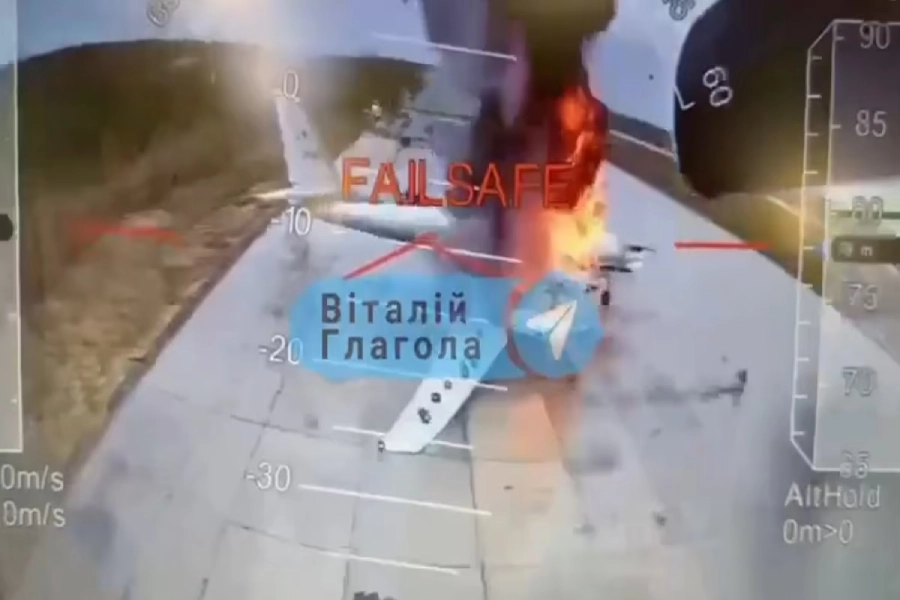In a dramatic escalation of long-range warfare, Ukraine launched an unprecedented drone operation, striking over 40 Russian strategic bombers deep within Russian territory. The Ukraine drone attack on Russian bombers has not only altered the tactical landscape of the ongoing conflict but also sparked legal and geopolitical debates around the world.

What Happened?
On June 1, 2025, Ukraine’s Security Service (SBU) confirmed it had successfully executed a drone assault on Russian airbases. According to Ukrainian President Volodymyr Zelensky, the attack was “our most long-range operation” yet — a bold mission that took over 18 months to plan.
A military source told the Associated Press that 41 Russian military aircraft, including Tu-95, Tu-22M3, and A-50 models, were hit at bases in Murmansk and Irkutsk. These aircraft are routinely used by Russia to launch missile attacks on Ukrainian infrastructure and civilians.
Why Were the Russian Bombers Targeted?
The Ukraine drone attack on Russian bombers focused specifically on long-range aircraft used in strategic bombing campaigns. These bombers have been critical in Russia’s war strategy, frequently launching cruise missiles from Russian territory, far from the frontlines.
By striking these planes directly, Ukraine has:
-
Degraded Russia’s offensive capabilities
-
Sent a strong political and military message
-
Improved its position ahead of any peace negotiations
How the Operation Was Executed
In an unprecedented display of covert strategy, Ukrainian forces reportedly smuggled FPV drones into Russia, hiding them in mobile wooden houses. At the right moment, the roofs of these structures were remotely opened and drones took flight, homing in on Russian military aircraft.
This innovative method shows a new frontier in asymmetric warfare, where creativity and agility matter more than brute force.

Is the Attack Legal Under International Law?
This is where the Ukraine drone attack on Russian bombers becomes not just a military event but a legal milestone. Under international law, specifically Article 51 of the United Nations Charter, every state has the inherent right to self-defense.
Key Legal Criteria:
-
Necessity: The bombers had been used against Ukraine.
-
Distinction: Only military assets were targeted.
-
Proportionality: The attack was limited to aircraft, avoiding civilian harm.
From a legal perspective, the strike complies with the Laws of Armed Conflict and can be justified as a legitimate act of self-defense.
Could the United States Be Implicated?
Although the U.S. has provided Ukraine with logistical support, drones, and intelligence, American officials have denied any prior knowledge of this particular operation.
So far, no credible evidence suggests that U.S. personnel were directly involved in the Ukraine drone attack on Russian bombers. Legally, this keeps the U.S. within the boundaries of support without escalation.
If Ukraine used domestically modified commercial drones (which seems to be the case), and not U.S. military hardware, there is no breach of export control or arms transfer regulations.
Military Impact: Russia’s Vulnerability Exposed
The attack has significantly impacted Russia’s sense of strategic depth. These bombers were stationed in areas believed to be well outside the reach of Ukrainian forces. The successful penetration by drones has exposed:
-
Gaps in Russian air defense systems
-
The vulnerability of stationary high-value assets
-
The new reach of Ukraine’s asymmetric tactics
This operation is likely to force Russia to rethink its basing and air defense strategies, possibly stretching its resources even thinner.

Geopolitical Consequences
The Ukraine drone attack on Russian bombers may influence future peace talks, military aid decisions, and NATO’s strategic posture. Key implications include:
-
Increased Western confidence in Ukrainian military innovation
-
Justification for continued or expanded arms support
-
Pressure on Russia to reinforce interior defenses
Moreover, the attack underscores the growing role of low-cost, high-precision drone technology in modern warfare — a shift that could redefine military doctrine worldwide.
The Evolution of Drone Warfare
Ukraine’s use of FPV (first-person view) drones has set a precedent. No longer are drones limited to surveillance or short-range strikes; they are now instruments of strategic deterrence.
This operation may become a case study in military academies, demonstrating how tactical innovation and legal discipline can coexist in modern combat.
Conclusion
The Ukraine drone attack on Russian bombers is not just another strike — it’s a statement. It tells the world that Ukraine is not merely defending; it’s reshaping the battlefield. It operates within the framework of international law, disrupts enemy logistics, and inspires new thinking in global military strategy.
As the conflict continues, this event may well be remembered as a decisive moment — where drone warfare, legal doctrine, and military innovation converged to change the course of war.
FAQ
1. Was the Ukraine drone attack on Russian bombers legal?
Yes, under Article 51 of the UN Charter, Ukraine has the right to self-defense. The operation targeted military aircraft actively involved in attacks on Ukrainian cities.
2. Did Ukraine use U.S. drones in the attack?
No confirmed reports indicate U.S. drones were used. The drones were likely Ukrainian-built or modified from commercial sources.
3. How many Russian bombers were hit?
Ukraine reports that 41 aircraft, including Tu-95, Tu-22M3, and A-50 models, were struck during the drone attack.
4. What kind of drones did Ukraine use?
Ukraine reportedly used small, camouflaged FPV drones, which were smuggled inside Russia and launched from disguised locations.
5. Is this the longest-range Ukrainian drone strike so far?
Yes. President Zelensky called it the “most long-range operation” to date, targeting deep military zones within Russia.

